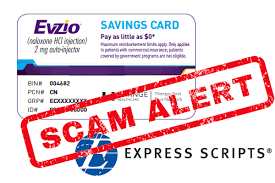 The opioid crisis has grown exponentially – ravaging communities and taking an estimated 64,000 lives each year – escalating into a public health epidemic. In response to the increased availability of synthetic opioids like oxycodone and fentanyl, the Surgeon General called for expanded access to the opioid overdose antidote, naloxone, by using the slogan: Be Prepared. Get Naloxone. Save a life.
The opioid crisis has grown exponentially – ravaging communities and taking an estimated 64,000 lives each year – escalating into a public health epidemic. In response to the increased availability of synthetic opioids like oxycodone and fentanyl, the Surgeon General called for expanded access to the opioid overdose antidote, naloxone, by using the slogan: Be Prepared. Get Naloxone. Save a life.
Naloxone is a compound which can literally cheat death, however due to price increases of up to 600%, public agencies are unable to afford to supply their first responders despite a federal mandate to do so. According to data collected by the FDA, the price of generic naloxone—made by Hospira — jumped by 50% in January 2014. Amphastar, the producer of a product that can be used intranasally, doubled their price recently. And Kaleo, which developed an ingenious “talking” naloxone auto-injector, known as Evzio, increased their price from $575 at market entry to $4500 for a two-pack.
While the government could use existing legal authority to slash prices for the lifesaving naloxone, there is more to reducing drug costs than meets the eye. Medicare is legally prohibited from negotiating prices with drug companies. By employing a sales force to encourage doctors to sign off on paperwork that Evzio was “medically necessary”, Kaleo forced insurers and the federal government to foot the bill–Medicare shelled out $142 million for Evzio over the last 4 years—due to exorbitant price increases.
Secretary Alex Azar is contemplating removing the “safe harbor” provision, which was added to the anti-kickback statute of the Social Security Act by Congress in 1987. The provision was designed to support group purchasing organizations, or GPOs, which got their start at the turn of 20thcentury as hospital cooperatives. GPOs, it was thought, could score better deals by buying medications in bulk, bringing down health care costs by negotiating discounts with drug manufacturers.
But that’s not what happened.
Instead, the safe harbor provision led to an institutionalized system of “pay-to-play” corruption that would be illegal in any other industry. With only four GPOs supplying virtually all U.S. hospitals, the competition to secure the exclusive right to supply each of those hospitals with any given drug is fierce – and, thanks to the safe harbor provision – dirty. Under the provision, pharmaceutical companies are forced to pay what amounts to kickbacks to GPOs to win coveted supply contracts.
Drug shortages result because there’s little incentive for drug companies to continue producing a particular drug after their competitor wins the lucrative GPO supply contract. Relying on the lone contracted manufacturer then increases the chance of experiencing a dangerous drug shortage.
In 2005, a bipartisan bill to repeal this obscure provision was drafted by Senators Herb Kohl (D-WI) and Mike DeWine (R-OH), but the legislation died in Subcommittee and has not been resurrected. Congress is well aware of the risk the safe harbor provision poses to the American people, yet have proven loathe to act. Why?
The answer lies in the power of the pharmaceutical lobby, which spent $171.5 million in 2017 and boasts two lobbyists for every member of Congress. Nine out of 10 members in the House and 97 of 100 U.S. senators accepted campaign contributions from pharmaceutical companies seeking to impact legislation, including both senators from Washington State. (As the ranking member on the Senate’s committee on Health, Education, Labor and Pensions, Sen. Patty Murray has yet to formally weigh in on the issue safe harbor repeal).
Return on investment for big pharma lobbying efforts has resulted in nothing short of a windfall. By ramping up lobbying in 2008, Mylan –of Epi-Pen autoinjector fame—garnered legislation mandating the placement of epinephrine autoinjectors in every school in America. By the time President Obama signed the “EpiPen Law” in 2013, known as the School Access to Emergency Epinephrine Act, Mylan secured themselves a market monopoly.
Initially, Kaleo created an Epi-Pen alternative to compete with Mylan, but soon set their sights on a more lucrative, not-yet-exploited niche: the opioid crisis. Company documents demonstrate the Kaleo business model was restructured to “capitalize on the opportunity” of “opioid overdose at epidemic levels.” Naloxone –the lone antidote — costs less than ten cents to produce, yet has become cost-prohibitive to public agencies.
Using the Mylan roadmap, Kaleo successfully lobbied the FDA for approval of their device for consumer use, then increased the price substantially. By the time fifty states enacted laws mandating law enforcement and first responders to carry naloxone to treat opioid overdoses, Kaleo secured a market monopoly of their own. The drug supply landscape is more of a coercive monopoly: the fees “kicked-back” to the GPOs are based on a percentage of the charges; higher prices are in the best interest of the pharmaceutical companies and the GPOs alike.
The bottom line is opioids are costing too many American lives. Congress has the power to alter the course of the worst public health crisis facing Americans by reigning in the pharmaceutical industry through legislative intervention. Removing “safe harbor” provision of the Social Security Act could save up to $30 billion annually and save 47 Americans from opioid overdose deaths per day. We must push lawmakers to close the pharmaceutical industry loophole before it is too late.
big firm is manufacturing all theses for the students. The quality of the firm and visits of the http://www.road2residency.com/personal-statement-for-pathology-services/ are accumulated for the humans. It has been opened for the flow of the discussion and al items for the humans in the___14 forth coming elements for the humans.